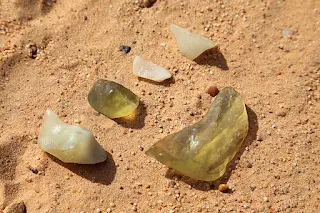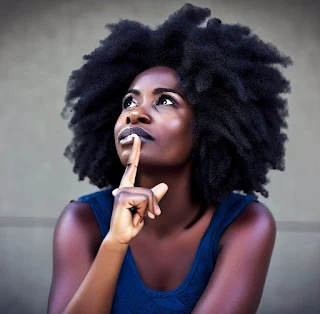Asteroids Fall To Earth: The Sahara Desert Asteroids
The Kamil Crater, a result of an asteroid's impact on Earth, lay hidden for 10,000 years before its discovery.
Asteroids Desert Fall and the Kamil Crater Formation
Ancient asteroid's powerful impact, Kamil Crater
When an asteroid enters the Earth's atmosphere, it travels at an extremely high speed, sometimes faster than a supersonic jet flying through the sky. As it comes into contact with the Earth's atmosphere, the air in front of the asteroid gets compressed, causing it to heat up and create a bright streak of light in the sky. This is what we see as a shooting star or a meteor.
Now, imagine the asteroid is bigger than the usual shooting star and doesn't burn up completely in the atmosphere. Instead, it keeps hurtling downward at an incredible speed. Now imagine you're in a large, empty field, and suddenly, a rock the size of a small car comes crashing down from the sky and hits the ground with incredible force.
This enormous amount of energy is released upon impact, causing a tremendous explosion-like effect. This impact creates a big hole in the ground, like a giant bowl-shaped dent, with the hole's edges pushed up around it. The hole is about as wide as half a basketball court and as deep as a four-story building.
Asteroids Turns Rocks into Desert Glass
The Kamil Crater's estimated age is between 5,000 to 10,000 years old with a diameter of approximately 45 meters or 148 feet and a depth of about 16 meters or 52 feet. This bowl-shaped depression serves as a testament to the immense force of the asteroid's collision with the Earth's surface.
The immediate effects of the asteroids impact was awe-inspiring. The ground at the point of impact is vaporized, and molten material is thrown outwards at high speeds, creating a splash pattern around the crater. The aftermath of this cosmic dance between Earth and asteroid unveiled an extraordinary phenomenon: rocks in the area fused together, melted, and were transformed into glass. This glassy wonder, resembling a majestic dance of colors and textures, holds secrets about the tremendous forces that shaped our planet.
 |
| Desert Glass |
When asteroids hit the Earth at high speeds, they release a massive amount of energy that can melt nearby rocks, turning them into hot, liquid material called impact melt. This process, known as impact melting, happens when the rocks experience extreme heat and pressure during the collision. As the melted rocks cool down rapidly, they solidify into glass, lacking a regular crystal structure.
This glassy material, called impact-melt glass or desert glass can have different textures and features depending on the impact conditions. Desert glass is prized by collectors and researchers due to its unique origin and striking appearance. The most common form of desert glass is called Libyan Desert Glass, which is found in the Libyan Desert in Egypt. This glass is usually yellow or greenish in color and has a distinct and often translucent appearance.
Also, the shockwaves and the intense heat radiating from the impact can also cause wildfires, and the debris thrown into the atmosphere can temporarily block sunlight, leading to changes in climate. The impact may also eject small particles and dust into the atmosphere, contributing to long-term changes in the Earth's climate.
The Kamil Crater Laid Undiscovered for Thousands of Years
Now, imagine this impact happened thousands of years ago, and nobody noticed it until recently because it occurred in a remote and deserted area. Scientists found this massive dent in the ground and studied the rocks and materials left behind to understand how it all happened.
The first person to discover the Kamil Crater was an Italian geologist named Vincenzo De Michele. He and his team from the Museo Nazionale dell'Antartide in Italy found the crater in February 2008 while they were studying satellite images of the region.
The Kamil Crater is a massive hole in the desert of Egypt caused by a rock from space crashing into the Earth a long time ago. The crater's depth is akin to a giant swimming pool and its width rivals that of a football field. The crater's shape, the melted rocks, the scattered debris, and the cracked rocks nearby are all clues that scientists use to learn more about the impact and what happens when something big from space hits our planet.
Kamil Crater is located in the Harsh Eastern Sahara Desert
The Kamil Crater remained hidden from human eyes, isolated in its desert sanctuary for millennia. It is located in the southwestern desert of Egypt, specifically in the region known as the Eastern Sahara Desert. It is situated near the border with Sudan, in a remote and inhospitable area.
The Eastern Sahara Desert is considered inhospitable primarily due to its extreme environmental conditions. It is characterized by harsh landscapes and challenging climate, making it difficult for human habitation and survival. It is one of the driest regions on Earth, receiving very little rainfall throughout the year. The scarcity of water makes it challenging for plants and animals to survive in this arid environment.
Also, the Eastern Sahara Desert is characterized by vast stretches of sand dunes and rocky terrain, making the Kamil Crater a relatively isolated and challenging site to access. The chances of coming across the Kamil Crater among the known impact craters was relatively low, approximately 0.5%.
Thanks to advancements in satellite technology, remote sensing, and aerial surveys, the discovery of impact craters have become easier. By using these technological tools, the chances of finding previously unknown craters have significantly improved. However, identifying impact craters from aerial or satellite imagery is still challenging since they can look similar to other geological features or be hidden by vegetation or sediment.
Asteroids Hitting the Earth Can be a Good Thing
Some asteroids are rich in valuable minerals, such as precious metals and rare earth elements. In the future, mining asteroids could become a potential source of important resources for space exploration and even for sustaining life on Earth.
Studying the impacts of asteroids on Earth provides valuable insights into planetary processes and the history of our solar system. By examining impact sites, scientists can better understand the geology and composition of both Earth and asteroids.
Asteroid impacts serve as a reminder of the potential hazards we face from space. Understanding these events can help us develop strategies to protect our planet and spacecraft during future space missions.
In some cases, asteroid impacts can create unique habitats for specialized organisms that adapt to extreme conditions. Over time, these habitats can become home to diverse and resilient ecosystems.
Impact craters can become iconic landmarks and contribute to the cultural and historical heritage of a region. They can also provide valuable geological records of past events.










